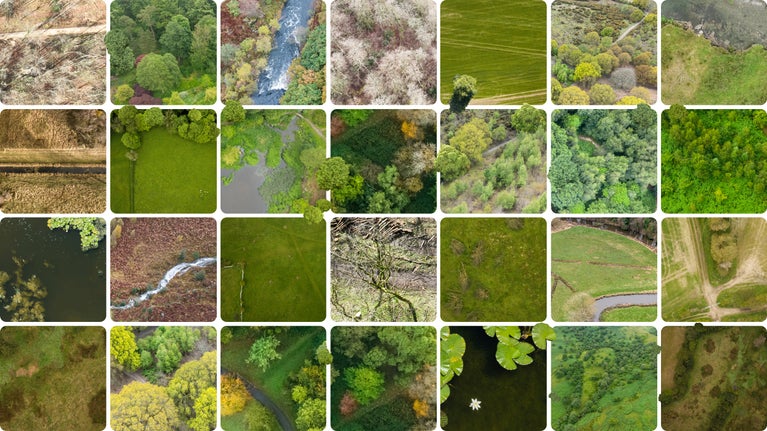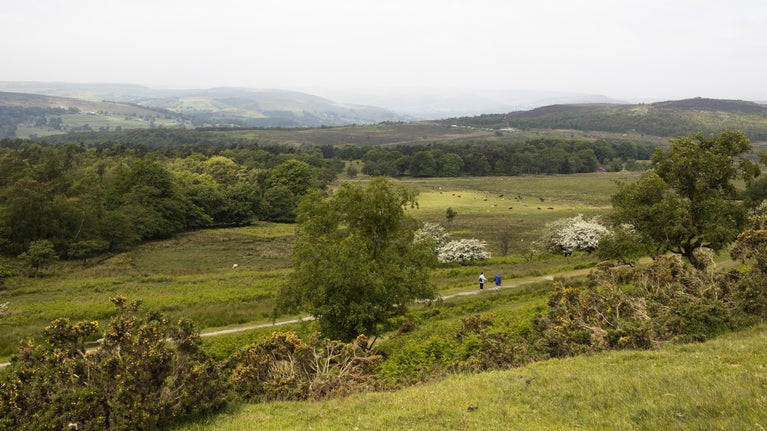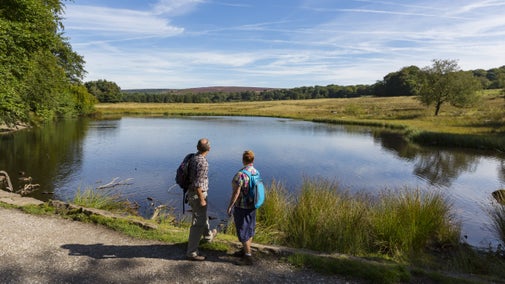
Adopt a Plot
Adopt a Plot today and together, we can welcome back our natural landscapes, one plot at a time.

We are delighted to welcome Springwatch 2025 to Longshaw, for the 20th anniversary of the series. This is the first time the team has broadcast live from this unique landscape made up of peatlands, woodlands and meadows. The stage is set to bring unique and special views of wildlife from across the Peak District to viewers everywhere.
Springwatch 2025 is bringing some magical moments of nature watching from across the Peak District to our screens. The programme will feature stories about some of the intriguing wildlife which rely on the mixture of important habitats in the uplands landscape, including stories about the behaviours of birds such as ring ouzels and pied flycatchers and the magic of mammals and minibeasts from in and around Longshaw, Burbage and the Eastern Moors.
Tune in to see plenty of fascinating stories and drama from nests, setts, burrows and roosts across the iconic moorlands, meadows, woodlands and waterways. As well as wildlife watching from towns and cities on the edge of the Peak District.
Looking further afield, you will also be able to discover more about the wildlife at Mount Stewart in Northern Ireland in the third week of the series.
The programme is on air on BBC Two and iPlayer, from Monday to Thursday for three weeks from Monday 26 May to Thursday 12 June.
The programme is on BBC Two and iPlayer, from Monday to Thursday for three weeks from Monday 26 May to Thursday 12 June.
Rosemary Edwards, Executive Producer, Springwatch said:
“We wanted to broadcast from the Longshaw Estate because its upland habitats offer the opportunity to put hidden cameras on a different range of species for the first time, for example ring ouzel, whinchats, and moorland curlew.
“Filming in a new location and getting to know the wildlife there means we can share uplifting stories about our native flora and fauna. And that is something that never ceases to excite us.”
The woodlands, heathlands and meadows around Longshaw and the moorlands beyond are home to many fascinating creatures from large mammals like a herd of wild red deer to smaller ones like bats and hares, as well as huge variety of birds, insects and reptiles. Learn more about the stars of the show and other creatures you might see if you visit Longshaw, Burbage and the Eastern Moorse:
Wildlife watching can be so rewarding, but it’s important to do it in a way that doesn’t disturb the species you want to see or damage the landscapes that they need for food and shelter.
Here are 3 top tips to help you see more wildlife and look after the places they live.
You’ll find all you need to know about visiting Longshaw here.
There’s plenty of wildlife watching and nature themed events and activities planned at Longshaw over the next few months. Take a look at our events page to find out more.

Adopt a Plot today and together, we can welcome back our natural landscapes, one plot at a time.

Read about the work going into maintaining the landscape for wildlife and visitors at Longshaw, Burbage and the Eastern Moors.

Discover panoramic countryside views, ancient woodland and heather moorland on a walk at Longshaw. Find out what you’ll see on your next adventure.

Longshaw Estate, is a stunning backdrop for a family adventure in the great outdoors. Find out about the things you can do with your family, and look out for our seasonal activities throughout the year.